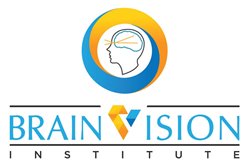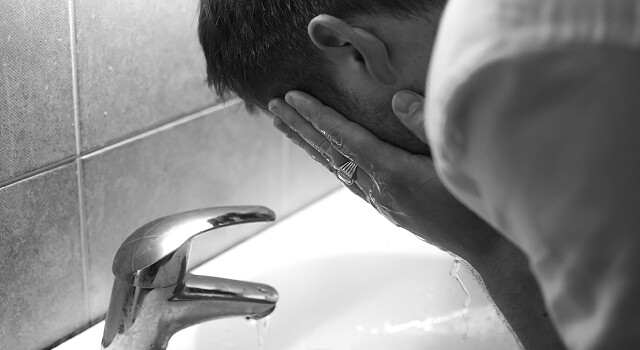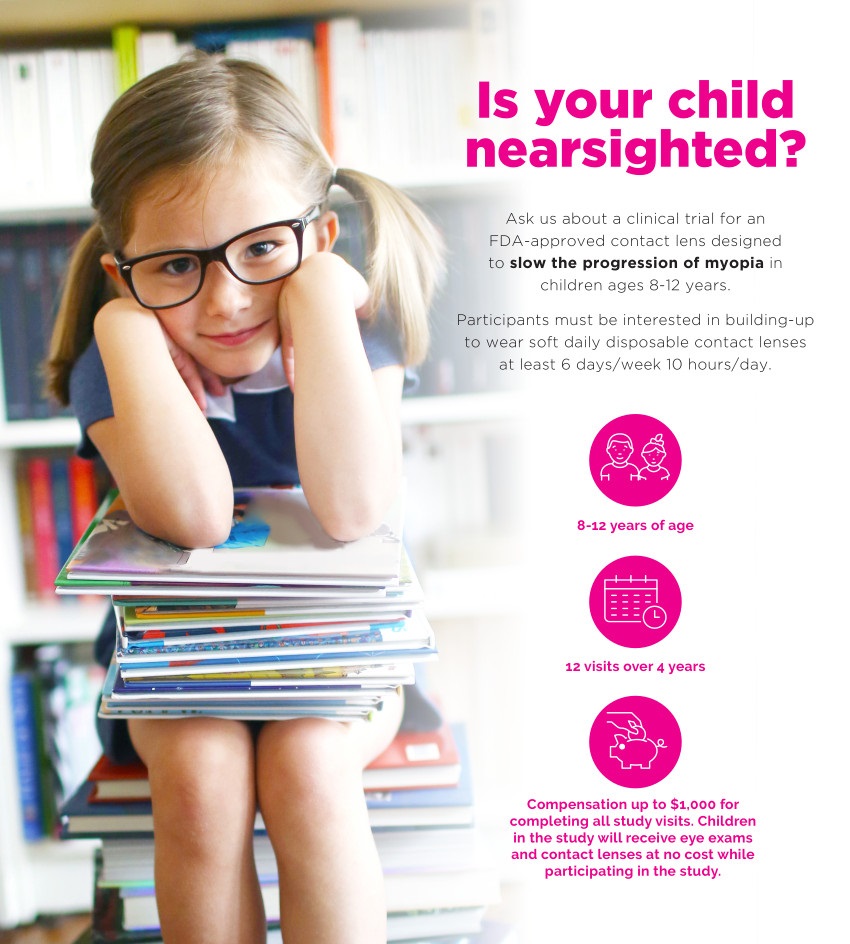
DIY Guide For Parents To Slow Their Child’s Myopia Progression
Parents go to great lengths to ensure that their children are happy, healthy and thriving. That’s why we encourage parents to learn about their little ones’ eye health and ways to minimize myopia (nearsightedness) progression.
What many parents don’t realize is that pediatric myopia increases a child’s risk of developing serious sight-threatening eye diseases later in life.
Compared with their peers, children with moderate to high myopia are significantly more likely to develop cataracts, macular degeneration, glaucoma, retinal detachment and myopic maculopathy later in life. Slowing down myopia or preventing it from developing will greatly increase your child chances of having healthy and clear vision for a lifetime.
The following guide is for parents of all children and teens, whether myopic or not, to delay the onset of myopia or slow its progression.
1. Increase Outdoor Time
Studies have shown that myopia development depends on how much time per day a child spends outdoors, especially during the day and in the sunshine. Although researchers haven’t yet unanimously agreed on the reason, they agree that kids who spend significant amounts of time outdoors tend to experience slower myopia progression than their peers who stay mostly indoors.
One theory is that spending time outdoors allows children to shift their focus from near objects to distant ones. Others suggest that the sun’s bright light is what slows down myopia.
We recommend that children ages 6 and above spend at least 2 hours per day outdoors in the daylight. Make sure to follow local health guidelines regarding wearing sunglasses, sunscreen, sun hats, and getting adequate hydration.
2. Limit Screen Time
Screen time is a big part of almost every child’s daily learning and recreational activities. That’s why it should come as no surprise that the global increase in screen time coincides with the rise of childhood myopia.
Researchers have found that children who spend a lot of time doing ‘near’ activities like reading and writing, or playing and working on a digital device, experience a higher rate of myopia than their peers.
If your child has myopia or is at risk of developing it, we recommend limiting your child’s daily screen time to no more than 2 hours for children over the age of 2, excluding homework. Toddlers and babies should have as little screen time as possible.
When your child is using a digital device, make sure the screen isn’t too close to their face. Limiting screen time and increasing the distance between their eyes and the screen will also help minimize the uncomfortable symptoms of digital eye strain, like headaches and blurred vision.
This video speaks about recent research that reveals the negative effect electronic devices have had on children during the COVID-19 pandemic. The study found that the younger a child is, the more drastically extensive digital screen usage affects their vision.
This shows conclusively that younger children are at greater risk of long-term vision damage as a result of overexposure to digital devices.
3. Encourage Frequent Breaks
Any activity that requires intense visual concentration, like reading a book or watching television, should be interrupted every 20 minutes on average.
Research published in the Journal of Investigative Ophthalmology & Visual Science found that continuous near work (like screen time and reading) contributes more to myopia progression than interrupted near work.
So teach your child the 20-20-20 rule: every 20 minutes, look up from whatever you’re focusing on and stare at an object at least 20 feet away for at least 20 seconds. This will relax the eye muscles and break visual concentration.
4. Schedule Regular Eye Exams
Yearly eye exams are important for all children and teens, especially those with myopia or at risk of developing it.
Some parents believe that under-correcting a child’s myopia with weaker lenses than their actual prescription will benefit their child’s eye health, but this is unfounded. Make sure your child is fitted with glasses or contact lenses that adhere to their exact lens prescription.
Make sure to speak with your child’s optometrist regarding myopia management treatments that can slow or halt their myopia progression. Many parents choose myopia management for their children to minimize their future risks of eye disease.
While you may struggle to limit your child’s screen time, one thing you can do is offer myopia management treatments to slow or halt myopia progression.
This video discusses how good eye care can positively affect the brain, which also strengthens your child’s overall health. Our eye doctor outlines steps that can be taken to promote eye and full-body health, including eating healthy, staying hydrated and avoiding toxins.
5. Nutrition and Eye Health
What your child eats is really important for their brain and eye development. The eyes and brain are connected so closely that they’re often considered basically one and the same. What our eye clinic does for the eyes, we consider that we’re doing for the brain as well, and for the child’s health overall.
Green leafy vegetables are very high in VItamin A, which is critical for protecting your eyes from the damaging effects of blue light, which is increasingly important with all the digital media we take part in these days.
Increasing your time outdoors has been shown to help keep your child’s vision healthy, though we don’t know specifically why this happens. It may be tied to Vitamin D intake, as people who are nearsighted are shown to have lower levels of Vitamin D in their system.
Omega-3 fatty acids are also essential, as they help cells within the eye regenerate and remain healthy, especially as they are pulled and stretched when the eye grows.
All of these and more are good for your brain and your eyes, and solid evidence exists for how they help maintain long-term eye health.
In this video, our eye doctor discusses the connection between the brain and the eyes, and outlines specific foods that can help promote brain and eye health, including increasing your intake of Vitamin A by eating leafy greens. Fatty fish and certain nuts are recommended in order to increase Omega-3 intake. Increased time outdoors is also believed to help promote brain and eye health.
6. What Changes Can We Make At Home?
So, what changes can we make at home to help our children maiantian better long-term eye health?
Make sure they aren’t doing close-work in the dark or in low-light settings. Use proper lighting to reduce eyestrain.
Help your child get outside more, since studies have shown conclusively that children who spend at least 2 hours every day outdoors have lower rates of myopia development.
A healthy sleep schedule is also very important as well, including ending use of digital screens a few hours before bed. This gives your child’s eyes a break from blue light and communicates to their body that it’s time to begin winding down.
Reading materials and digital devices should be used at a healthy distance from the eyes. Regular breaks from these materials should also be taken. A good recommended distance is the length of your child’s forearm. Observe the 20-20-20 rule: Every 20 minutes, look away from the digital device for 20 seconds at something at least 20 feet away.
Also ask our eye doctors about myopia management, which can significantly reduce your child’s myopia progression over time.
This video discusses changes that can be made at home to help children maintain better long-term eye health. Our eye doctor mentions optimum lighting conditions, time spent outdoors, healthy sleep schedules, responsible digital media usage and myopia management techniques.
To learn more about what you can do to help preserve your child’s vision, call Brain Vision Institute today.
Our practice serves patients from Northwest Suburbs of Chicago, South Barrington, Hoffman Estates, and Arlington Heights, Illinois and surrounding communities.









